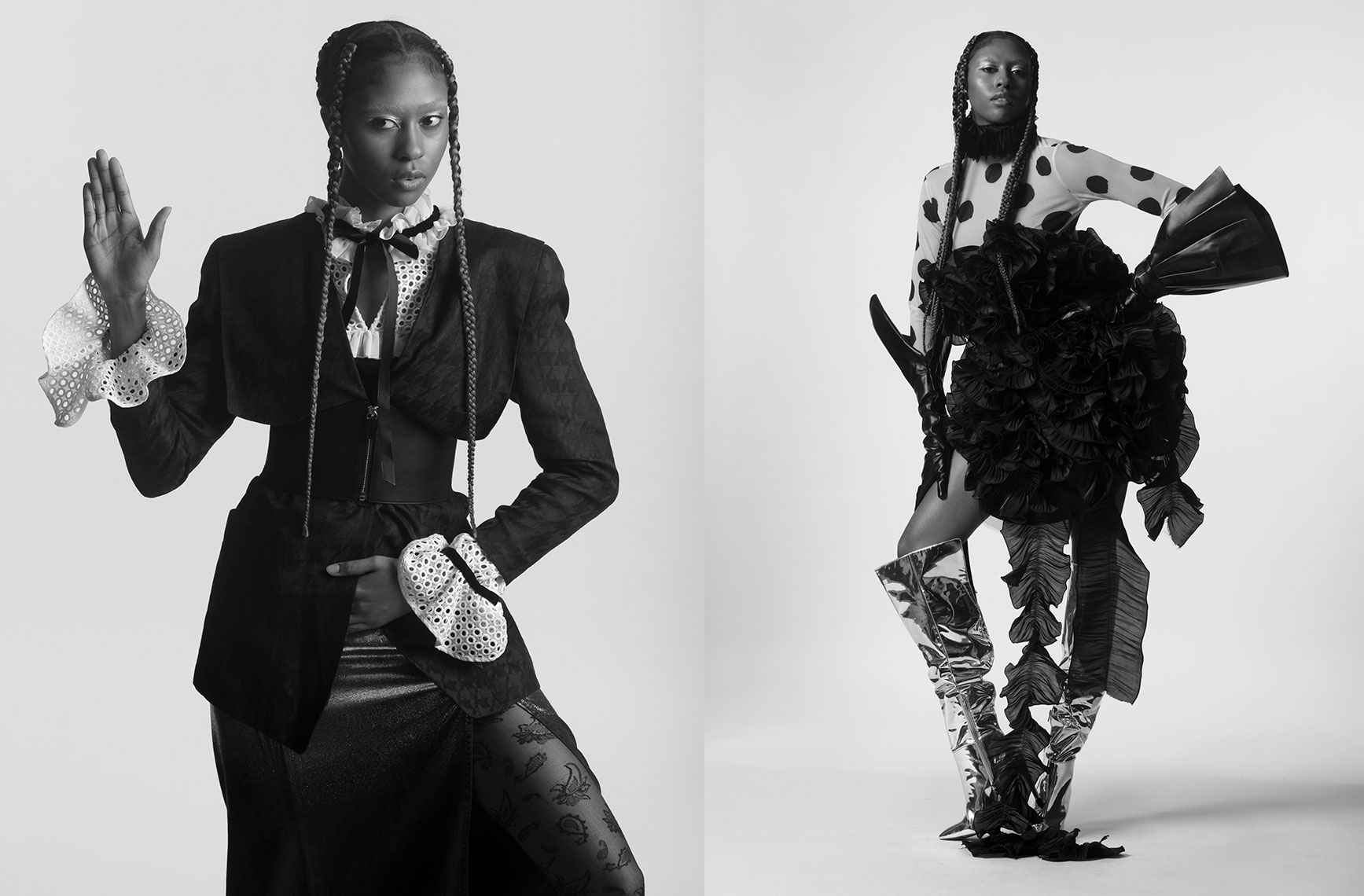Tricot fabric is a knit fabric commonly used for making lingerie, sportswear, and swimwear due to its stretchy and breathable qualities. Tricot fabric is a versatile knit fabric that is widely used in the fashion industry for making intimate apparel, sportswear, and swimwear.
Known for its excellent stretch and breathability, tricot fabric is made by knitting yarns together in a straight stitch, resulting in a smooth and strong material. Its unique construction allows it to withstand heavy use and retain its shape well.
Tricot fabric is often preferred for athletic and intimate clothing due to its ability to provide a comfortable and supportive fit. With its durability and versatility, tricot fabric has become a popular choice among designers and manufacturers alike.
Table of Contents
The Origin Of Tricot Fabric
Tricot fabric has a rich history that dates back to its invention in the 19th century. Let’s delve into the intriguing origins and evolution of this versatile textile.
Invention And History
Tricot fabric was invented in the 19th century by a French textile innovator. The creation of tricot fabric revolutionized the textile industry, offering a unique alternative to traditional woven fabrics. Its invention marked a significant milestone in the evolution of textile manufacturing.
Evolution In Modern Times
In modern times, tricot fabric has undergone significant evolution, adapting to the changing demands of the fashion and textile industry. With advancements in technology, tricot fabric has become more versatile, allowing for a wide range of applications across various industries. Its adaptive nature has made it a popular choice for athletic wear, lingerie, and other high-performance apparel.
Characteristics Of Tricot Fabric
Tricot fabric is known for its smooth texture and stretchy quality, making it ideal for active wear and lingerie. The fabric is durable, wrinkle-resistant, and offers great draping capabilities, making it a popular choice for various clothing items.
Tricot fabric is a versatile textile known for its unique characteristics. Whether you’re a fashion designer or simply curious about textiles, understanding the characteristics of tricot fabric can help you make informed decisions about its use. In this article, we will explore three key attributes of tricot fabric: its texture and feel, stretch and recovery, and common applications.
Texture And Feel
Tricot fabric has a distinct texture and feel that sets it apart from other fabrics. It is incredibly smooth and silky to the touch, thanks to its tight-knit construction. The surface of tricot fabric is usually flat and almost seamless, making it incredibly comfortable against the skin. This luxurious texture adds a high-quality touch to garments and makes tricot fabric a popular choice for lingerie, activewear, and intimate apparel.
Stretch And Recovery
One of the key advantages of tricot fabric is its exceptional stretch and recovery capabilities. Tricot fabric can stretch in both the length and width directions, allowing for greater flexibility and ease of movement. Additionally, it has excellent recovery properties, meaning that it can quickly regain its original shape after stretching. This unique attribute makes tricot fabric ideal for garments that require a close, body-hugging fit, such as swimwear, sportswear, and shapewear.
Common Applications
Tricot fabric finds its use in a wide range of applications across various industries due to its desirable characteristics. It is commonly used in the production of athletic wear, including sports bras, leggings, and jerseys, as it offers superior stretch, moisture-wicking properties, and comfort for athletic activities. Additionally, tricot fabric is popular for lingerie and sleepwear due to its softness, smoothness, and luxurious feel. It is also utilized in the automotive industry for seat covers, headliners, and other interior components due to its durability and ease of maintenance.
Production Process
Tricot fabric is a durable and stretchy textile commonly used in various types of clothing items. The production process of tricot fabric involves intricate methods to create a high-quality material.
Knitting Method
Tricot fabric is produced using a warp-knitting method, where parallel yarns are formed into loops. This method enhances the fabric’s strength and elasticity.
Yarn Selection And Dyeing
High-quality yarn is carefully selected for tricot fabric to ensure durability and color vibrancy. Dyeing is meticulously done to achieve the desired hues and patterns.
Finishing Techniques
Various finishing techniques are applied to tricot fabric, such as calendering and brushing, to enhance its texture and appearance. These techniques contribute to the overall quality of the fabric.

Credit: erichason.com
Types Of Tricot Fabric
Double Needle Bar Tricot
Double Needle Bar Tricot is a type of tricot fabric that is known for its double needle bar knitting technique, which creates a firm and durable fabric.
Raschel Tricot
Raschel Tricot is a versatile tricot fabric that is characterized by its unique texture and design, making it ideal for a variety of applications.
Warp Knit Tricot
Warp Knit Tricot is a high-quality tricot fabric produced using a warp knitting technique, resulting in a strong, stretchable, and smooth fabric.
Advantages And Disadvantages
Tricot fabric is a versatile textile that is widely used in various industries, including fashion, sports, and automotive. Like any other fabric, tricot has its own set of advantages and disadvantages that are important to consider when choosing the right fabric for your project. In this section, we will explore the strengths and limitations of tricot fabric.
Strengths
Tricot fabric offers several advantages that make it a popular choice for many applications. Let’s take a closer look at its strengths:
- High stretchability: Tricot fabric is known for its excellent stretch and recovery properties, making it ideal for garments and accessories that require flexibility and comfort.
- Smooth and soft texture: The knitted construction of tricot fabric results in a smooth and soft texture, which feels gentle against the skin and enhances overall comfort.
- Good drape: Tricot fabric has good drapeability, allowing it to gracefully flow and conform to the body, creating a flattering and elegant silhouette.
- Excellent breathability: Due to its open-knit structure, tricot fabric promotes air circulation, making it breathable and suitable for warm weather conditions.
- Quick drying: Tricot fabric has moisture-wicking properties, absorbing sweat and drying quickly, which is particularly beneficial in sportswear and activewear.
Limitations
Despite its numerous strengths, tricot fabric does have some limitations that you should be aware of:
- Prone to snagging: The open structure of tricot fabric makes it more prone to snagging or pulling, which can compromise the fabric’s appearance and integrity. Care should be taken to avoid contact with sharp objects.
- Less durable: Compared to woven fabrics, tricot fabric is generally less durable and may not withstand heavy-duty use or rough handling as well.
- Less warmth: Tricot fabric is not as insulating as other fabrics, so it may not provide the same level of warmth in colder climates.
- Pilling tendency: Tricot fabric has a higher tendency to pill, especially if subjected to friction or regular wear. This can affect the fabric’s appearance over time.
- Less natural aesthetics: While tricot fabric is versatile, it often lacks the natural aesthetics and texture of woven fabrics, which may be preferred for certain applications.

Credit: www.vogue.fr
Care And Maintenance
When it comes to caring for your tricot fabric, proper maintenance is crucial to ensure its longevity and quality. From washing guidelines to storage tips, here’s how you can keep your tricot fabric in top condition.
Washing Guidelines
When washing tricot fabric, it’s important to follow the manufacturer’s instructions for the best results. Generally, you should:
- Gently hand wash or use the delicate cycle in your washing machine
- Use a mild detergent to maintain the fabric’s integrity
- Avoid using bleach or fabric softeners as they can damage the material
- Air dry the fabric to prevent shrinking or stretching
Storage Tips
Proper storage is essential to keep tricot fabric in optimal condition. Consider these tips:
- Fold the fabric neatly to prevent creases and wrinkles
- Store tricot fabric in a cool, dry place away from direct sunlight and moisture
- Use acid-free tissue paper to protect the fabric from discoloration
- Avoid hanging the fabric for long periods as it may cause strain on the fibers
Innovations And Future Trends
Tricot fabric, known for its versatile nature and stretch capabilities, continues to evolve with new applications and sustainable alternatives in the textile industry.
New Applications
With advancements in technology, tricot fabric is being innovatively used in various industries, including sportswear, automotive interiors, and medical textiles. The seamless construction and superior stretch of tricot make it ideal for form-fitting apparel and high-performance applications.
Sustainable Tricot Alternatives
As the demand for eco-friendly materials grows, sustainable tricot alternatives are gaining momentum in the market. Manufacturers are exploring the use of recycled polyester and organic cotton to create tricot fabrics with reduced environmental impact. These alternatives offer the same performance and comfort while promoting sustainable practices in the textile industry.

Credit: www.eysan.com.tw
Frequently Asked Questions On What Is Tricot Fabric
Is Tricot The Same As Polyester?
Tricot is a type of knitting technique, while polyester is a synthetic fabric made from chemicals. They are not the same. Tricot refers to the method of creating fabric, while polyester is the material used to make the fabric.
Is Tricot Similar To Cotton?
Tricot and cotton are different fabrics – tricot is a knit, while cotton is a natural fiber.
Is Tricot Fabric Stretchy?
Yes, tricot fabric is stretchy, making it a popular choice for activewear and undergarments. Its unique knit structure allows for flexibility and comfort during movement.
What Is Tricot Good For?
Tricot is good for making lightweight and stretchable garments like activewear, swimwear, and lingerie. It is also used for creating linings and interlinings in clothing. Its elasticity and texture make it suitable for creating comfortable and form-fitting clothing items.
Read Next: What is Lurex Fabric
Conclusion
To sum up, tricot fabric is a versatile textile known for its flexibility and durability. By understanding its unique characteristics and uses, you can make informed choices when it comes to selecting and caring for your clothing items. Whether you’re a fashion enthusiast or someone looking for reliable materials, tricot fabric is a valuable option to consider.
Embrace its benefits and explore its possibilities in your own wardrobe.
